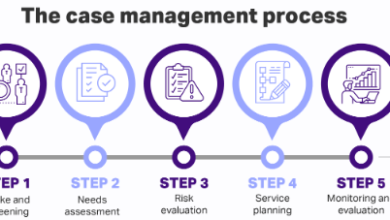
Legal Workflow Automation: 7 High-Impact Pilots for 2026
It’s 4:55 a.m. A motion is due at dawn. Your star junior associate is swimming in a sea of redlines, manually cross-referencing exhibit numbers and praying the partner doesn’t have one last “minor tweak.” This isn’t the high-stakes legal work they dreamed of in law school; it’s a high-stakes clerical marathon, and it’s burning out your best talent.
This scene plays out in firms every single night. It’s a silent tax on profitability, morale, and client service. But it doesn’t have to be this way. By the end of this article, you’ll have a playbook of seven high-impact pilots that leverage legal workflow automation to erase this nightmare, making 2026 the year your firm finally stops managing clicks and starts managing cases.
Why 2026 Is the Tipping Point for Legal Workflow Automation
If you’ve been waiting for the right moment to get serious about automation, this is it. The ground has shifted beneath the legal industry, and firms that don’t adapt will be left behind. Three forces are converging to make automation a matter of survival, not just a nice-to-have.
- Generative AI has finally matured. The technology is no longer a parlor trick. When trained securely on your firm’s data, it can draft, summarize, and analyze with terrifying speed and accuracy.
- The ALSP squeeze is on. Alternative Legal Service Providers are eating into traditional firm revenue by offering process-driven work—like document review and contract management—at a fraction of the cost, because they’ve mastered automation.
- Fixed-fee pressure is the new reality. Clients are tired of the billable hour and are demanding predictability. The only way to deliver value profitably on a fixed fee is to automate the unbilled grunt work ruthlessly. For more on this, see the latest Legal Tech Trends.
The Seven Pilots
Getting started with legal workflow automation doesn’t require a multi-million dollar, firm-wide overhaul. It begins with small, targeted pilots that solve real pain points. Here are seven you can launch this quarter.
Smart Client Intake & Conflict Checks
A potential client calls, and a paralegal spends 20 minutes taking notes before an associate manually runs a conflict check. Lexi, the intake bot, however, flags a potential conflict against three active matters before you’ve finished your first sip of coffee. This single workflow untangles the most complex part of your front door, saving 2-3 non-billable hours per intake.
- First-week build hint: Connect a simple web form (like Typeform) to your client database via an API to automatically query for and flag potential conflicts.
Auto-Drafted NDAs
A junior associate receives a request for a standard NDA and spends an hour locating the latest template and updating the party names. An automated workflow generates a client-ready draft from a five-field form in under five minutes. This simple bot vaults your team over low-value drafting and back to strategic work, saving 55 minutes per document.
- First-week build hint: Use a document generation tool (like Documate or Ironclad) and create a template that pulls variables from a simple intake questionnaire.
Discovery Document Clustering
You’ve just received 50,000 documents from opposing counsel, and a team of associates braces for weeks of manual sorting. An AI-powered bot, however, ingests the entire production and groups documents by topic, timeline, and key entities overnight. This shreds initial document review time by up to 70%, getting you to the smoking gun faster.
- First-week build hint: Use a platform with a secure AI API to run a script that reads document text and assigns topic-based tags for instant filtering.
Deposition Prep Q-Sheets
A partner needs to depose a key witness tomorrow, and an associate is working around the clock to compile a binder of questions. An AI agent can read the duplicate case files and generate a categorized Q-sheet, complete with exhibit citations, in under an hour. This bot saves 10-15 hours of high-stress prep time per deposition.
- First-week build hint: Feed the key case documents into a secure LLM instance with a prompt like: “Acting as a litigator, generate cross-examination questions for a witness based on these documents, citing each source.”
Billing Anomaly Flags
At month-end, a partner reviews pre-bills and encounters vague entries, such as “Case analysis,” which necessitates logging hours. A billing bot flags these entries in real-time, prompting the associate for more detail before the entry is even saved. This simple guardrail reduces billing write-downs by 5-10% by instantly improving narrative quality.
- First-week build hint: Set up a simple rule in your billing software to flag any time entry with fewer than 15 words or containing generic phrases like “review documents.”
E-Signature & Filing Bots
A settlement agreement is finalized, and the administrative chase begins: emailing for signatures, tracking versions, and manually filing with the court. A bot can manage the entire e-signature process and then hand off the fully executed document to a filing clerk with all metadata pre-filled. This cuts the signature-to-filing cycle time from days to hours.
- First-week build hint: Create a workflow in a tool like Zapier that triggers when a document is fully executed in DocuSign, then creates a task in your case management system.
Post-Matter Knowledge Capture
A complex deal closes, and the brilliant briefs are archived, never to be seen again. A post-matter bot can automatically summarize key documents and add them to a searchable, firm-wide knowledge base. This simple step reduces research time on new matters by providing instant access to relevant internal work product.
- First-week build hint: Create a flow that, upon a matter being marked “Closed,” sends the top five documents to an AI for summarization and saves the output to a tagged SharePoint list.
Anatomy of a Trusted Automation Stack
These pilots are powered by a stack of modern automation services built with the legal profession’s unique duties in mind. It’s not just about speed; it’s about security and control.
- Secure Integrations: The system must connect to your DMS, billing software, and legal databases through secure, encrypted APIs, not flimsy screen-scraping.
- Role-Based Access Control (RBAC): The automation should only have the minimum permissions necessary to do its job. A billing bot has no business reading confidential case documents.
- Immutable Audit Trail: Every action the automation takes—every document it reads, every file it saves—is logged in a tamper-proof record for compliance and review.
- Human-in-the-Loop Override: For sensitive tasks, the automation should flag its recommendation for human approval before executing. A single click from a lawyer is the final gate.
ROI Dashboard—What Partners Care About
Forget fuzzy metrics. Automation delivers hard, measurable ROI that shows up on the balance sheet.
| Metric | Pre-Automation | Post-Automation | Delta |
| Average Bill Leakage (per matter) | $5,500 | $1,200 | -78% |
| Non-Billable Associate Hours (monthly) | 450 | 150 | -300 hours |
| Matter Intake-to-Engagement Time | 4 days | 1 day | -75% |
| Discovery Document Review Cost | $150,000 | $45,000 | -$105,000 |
Risk Radar & Ethical Guardrails
Moving fast doesn’t mean being reckless. The ethical duties of confidentiality and competence are paramount.
- Privilege waiver: An automation accidentally sends a privileged document to an external party.
Mitigation: Enforce strict RBAC and build workflows where external actions require explicit, human-in-the-loop approval. Never give a bot permission to email outside the firm on its own. - Hallucination risk: A generative AI model confidently invents a fake case citation or fact.
Mitigation: Ground all AI models with Retrieval-Augmented Generation (RAG), forcing them to cite specific, trusted sources from your firm’s DMS or approved legal databases. - Data residency: Your firm’s data is processed or stored in a jurisdiction that violates client agreements or privacy laws.
Mitigation: Utilize cloud providers that ensure data residency within a specific geographic region (e.g., US, EU) and execute a Data Processing Addendum (DPA) to enforce this requirement.
Conclusion – Your 90-Day “Pilot & Prove” Plan
The question is no longer if your firm will adopt automation, but when—and whether you’ll lead the charge or be forced to play catch-up. Stop admiring the problem. Start solving it. This 90-day plan will take you from idea to impact.
- Month 1: Identify the Pain. Convene a small group of associates and paralegals. Ask them one question: “What’s the most repetitive, soul-crushing task you do?” Pick the one that elicits the biggest groan.
- Month 2: Build the Pilot. Partner with a legal tech expert to build a minimum viable version of the automation for that one task. Keep it simple. Focus on one metric.
- Month 3: Measure & Present. Run the pilot for 30 days. Track the “before” and “after” metrics. Build a single slide showing the time saved, errors reduced, or revenue recovered.
- Scale the Wins: Use the pilot’s success to secure a budget for the following three automation targets.
- Establish a Center of Excellence: Create a formal process for identifying, prioritizing, and deploying new automations across the firm.
Demo that single slide at your next partner meeting. When you show them how a small pilot saved 100 non-billable hours in a month, the budget for the next six pilots will find you.



